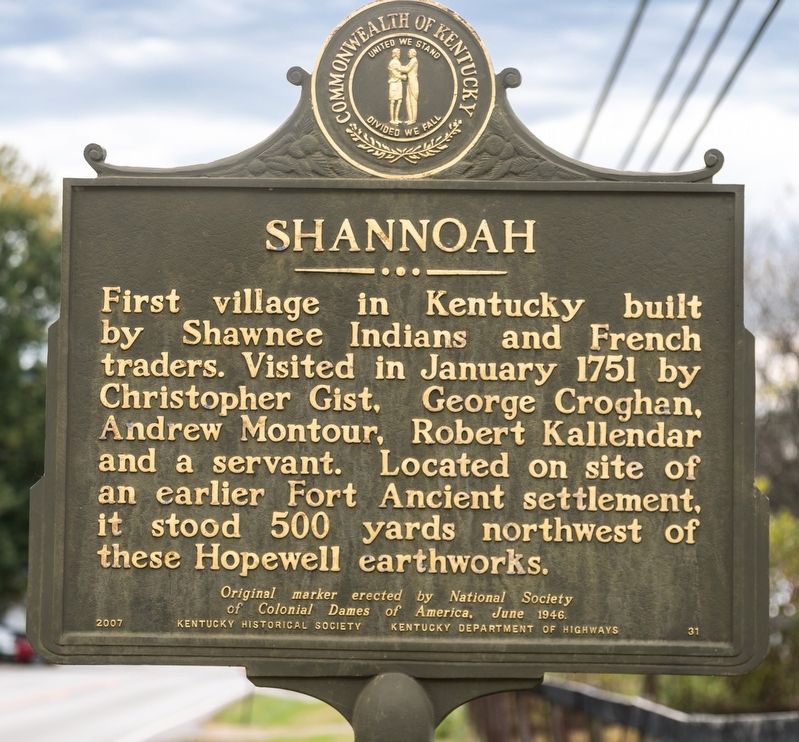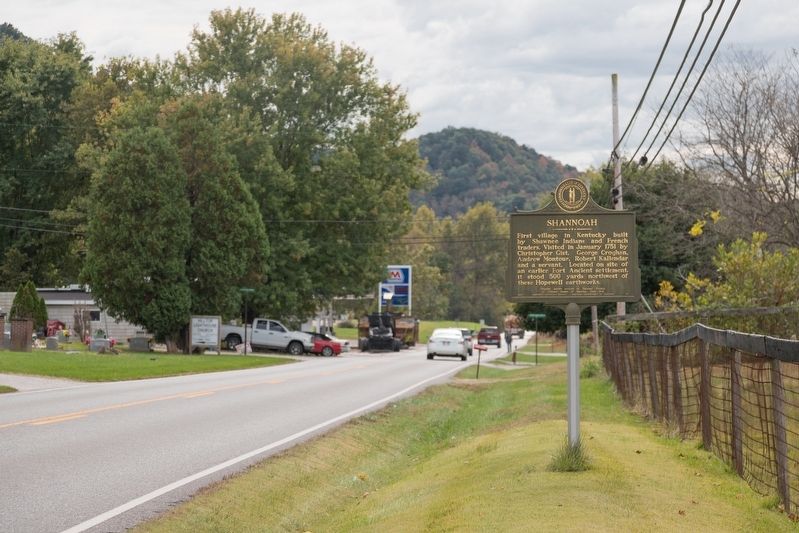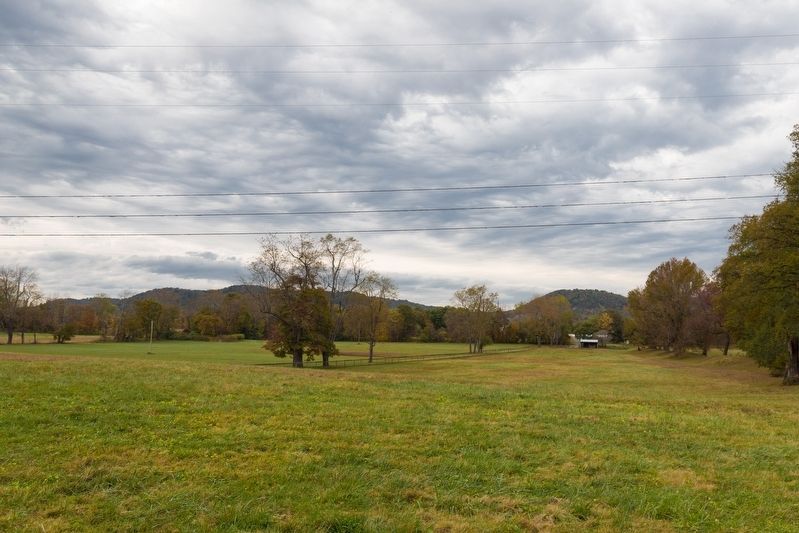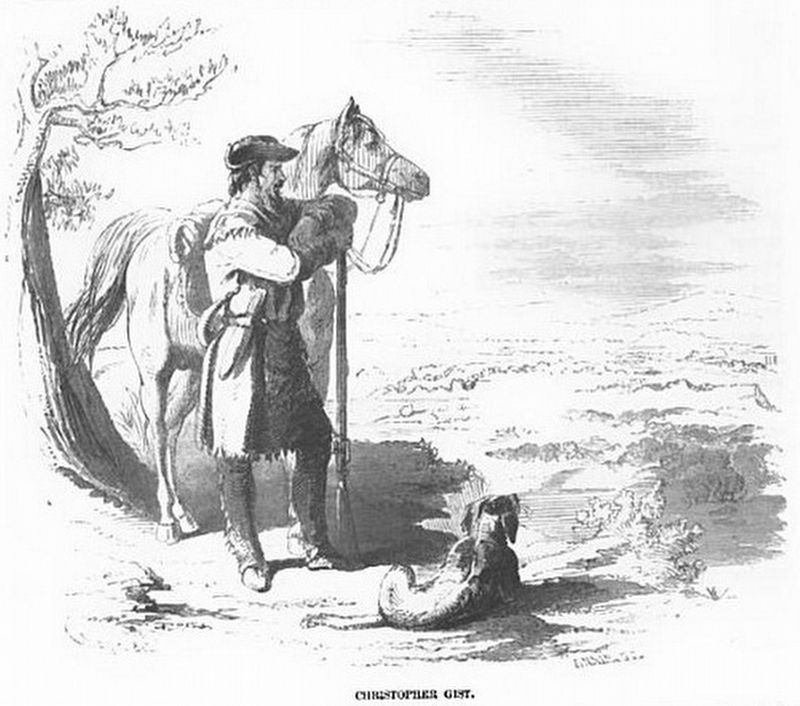South Portsmouth in Greenup County, Kentucky — The American South (East South Central)
Shannoah
Original marker erected by National Society of Colonial Dames of America, June 1946.
Erected 2007 by Kentucky Historical Society and Kentucky Department of Highways. (Marker Number 31.)
Topics and series. This historical marker is listed in these topic lists: Native Americans • Settlements & Settlers. In addition, it is included in the Kentucky Historical Society, and the The Colonial Dames of America, National Society of series lists. A significant historical month for this entry is January 1751.
Location. 38° 42.816′ N, 83° 1.442′ W. Marker is in South Portsmouth, Kentucky, in Greenup County. Marker is on Kentucky Route 8, 0.7 miles west of the Bridge to Ohio (Kentucky Route 852), on the right when traveling west. Touch for map. Marker is at or near this postal address: 1788 KY-8, South Portsmouth KY 41174, United States of America. Touch for directions.
Other nearby markers. At least 8 other markers are within 2 miles of this marker, measured as the crow flies. Twilight / Dedication Panel / Muralist Robert Dafford (approx. 1½ miles away in Ohio); Portsmouth Motorcycle Club / Good Times Remembered / Sunset at the Point / Sister Cities (approx. 1½ miles away in Ohio); A Struggle To Be Free (approx. 1½ miles away in Ohio); Portsmouth Railroads, 1950's / Modern Industry / Medical History / Twentieth Century Wars (approx. 1½ miles away in Ohio); Progress in Education / Shawnee State Expansion / Vern Riffe (approx. 1.6 miles away in Ohio); Chillicothe Street, 1940's / Steel Industry, 1870-1980 / Clarence Holbrook Carter / Carl Ackerman (approx. 1.6 miles away in Ohio); Roy Rogers / 1937 Flood / Branch Rickey / Kentucky Friends (approx. 1.6 miles away in Ohio); Millbrook Park / The Shoe Industry, 1869-1977 / Early 1900's Streetcar / Government Square, 1919 (approx. 1.6 miles away in Ohio).
Also see . . .
1. Wikipedia Entry for Lower Shawneetown. Excerpt:
Between about 1734 and 1758 Lower Shawneetown became a center for commerce and diplomacy, “a sort of republic populated by a diverse array of migratory peoples, from the Iroquois to the Delawares, and supplied by British traders, Lower Shawneetown had become a formidable threat to French ambitions. With a ‘fairly large number of bad characters from various nations,’ Lower Shawneetown posed a significant challenge to France and Great Britain alike. The community was less a village and more of a ‘district extending along the wide Scioto River and narrower Ohio River floodplains and terraces.’ It was a sprawling series of wickiups and longhouses ... French and British traders regarded Lower Shawneetown as one of two capitals of the Shawnee tribe.” —Stephen Warren, Worlds the Shawnees Made(Submitted on March 19, 2020.)
The town was destroyed by floods in November, 1758, and the population relocated to another site further up the Scioto River.
2. Wikipedia Entry for “Hopewell”. Excerpt:
The Hopewell tradition (also called the Hopewell culture) describes the common aspects of the Native American culture that flourished along rivers in the northeastern and midwestern Eastern Woodlands from 100 BCE to 500 CE, in the Middle Woodland period. The Hopewell tradition was not a single culture or society, but a widely dispersed set of related populations. ...(Submitted on March 19, 2020.)
Within this area, societies participated in a high degree of exchange with the highest amount of activity along waterways. The Hopewell exchange system received materials from all over what is now occupied by the United States. Most of the items traded were exotic materials and were received by people living in the major trading and manufacturing areas. These people then converted the materials into products and exported them through local and regional exchange networks. The objects created by the Hopewell exchange system spread far and wide and have been seen in many burials outside the Midwest.
3. Wikipedia entry for “Fort Ancient”. Excerpt:
Fort Ancient is a name for a Native American culture that flourished from Ca. 1000-1750 CE and predominantly inhabited land near the Ohio River valley in the areas of modern-day southern Ohio, northern Kentucky, southeastern Indiana and western West Virginia. Although far from agreed upon, there is evidence to suggest that the Fort Ancient Culture were not the direct descendants of the Hopewellian Culture. It is suspected that the Fort Ancient Culture introduced maize agriculture to Ohio.(Submitted on March 19, 2020.)
Credits. This page was last revised on March 19, 2020. It was originally submitted on March 19, 2020, by J. J. Prats of Powell, Ohio. This page has been viewed 402 times since then and 58 times this year. Photos: 1, 2, 3, 4. submitted on March 19, 2020, by J. J. Prats of Powell, Ohio.



